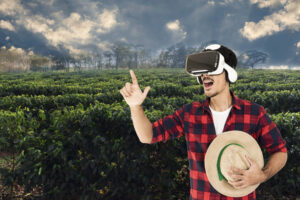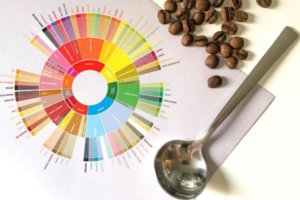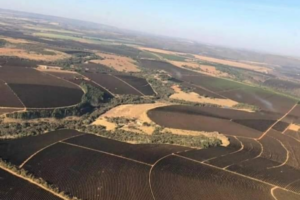Precision and Efficiency in Selection
Introduction:
In recent years, the integration of robotics and artificial intelligence (AI) has revolutionized various industries, enhancing efficiency, accuracy, and quality assurance. The coffee sector, recognizing the potential benefits, has also embraced these technologies, particularly in the crucial process of coffee bean classification. This article delves into the profound impact of robotics and AI on coffee bean classification, examining how these advancements have reshaped traditional methods and elevated quality standards.
The Role of Robotics:
Robotic systems equipped with advanced sensors play a pivotal role in the classification of coffee beans. These robotic arms, often equipped with cameras, near-infrared sensors, and other sophisticated technologies, meticulously examine each coffee bean, assessing its physical attributes such as size, shape, color, and density.
Utilizing machine vision technology, these robotic arms can capture detailed images of each bean, allowing for precise analysis. Additionally, near-infrared sensors are employed to measure internal qualities such as moisture content and bean density, providing further insights into the quality of the beans. The data collected by these sensors are then analyzed in real-time, allowing the robotic systems to make informed decisions regarding the classification of the beans.
Moreover, robotic systems offer unparalleled speed and consistency compared to manual sorting methods, significantly reducing processing time and labor costs for coffee producers. With the ability to process thousands of beans per hour, robotic sorting systems streamline the classification process, ensuring efficiency and accuracy at every stage.
Integration of Artificial Intelligence:
The integration of artificial intelligence (AI) amplifies the capabilities of coffee bean classification systems, enhancing accuracy and adaptability. AI algorithms, powered by vast datasets and machine learning techniques, enable robotic systems to recognize intricate patterns and variations in coffee beans that may elude human perception.
These algorithms continuously refine their sorting criteria based on feedback from previous classifications, ensuring ever-improving accuracy and adaptability to different bean varieties. For example, AI algorithms can learn to distinguish between different coffee bean varieties based on subtle differences in color, size, and shape.
Additionally, AI-driven systems can detect and remove defective beans with exceptional precision, safeguarding the overall quality of the coffee product. By harnessing the power of AI, coffee producers can achieve unparalleled levels of precision and consistency in bean classification, ultimately delivering superior-quality products to consumers worldwide.
Enhanced Efficiency:
The integration of robotics and AI not only enhances the accuracy of coffee bean classification but also significantly boosts operational efficiency. Robotic sorting systems can process large volumes of beans swiftly and consistently, minimizing bottlenecks in the production line. This increased efficiency translates to cost savings for coffee producers, as fewer resources are expended on manual labor and rework due to errors.
Moreover, the streamlined classification process enables faster turnaround times, ensuring that freshly sorted beans reach consumers promptly while maintaining optimal quality. Additionally, the data collected by robotic systems can be leveraged to optimize production processes further.
For instance, insights gained from real-time monitoring of bean quality can inform decisions regarding roasting profiles, blending ratios, and packaging specifications, leading to further efficiencies and quality improvements throughout the supply chain. As a result, coffee producers can achieve higher levels of productivity and profitability while meeting the growing demand for high-quality coffee products in the global market.
Quality Assurance:
Central to the adoption of robotics and AI in coffee bean classification is the assurance of quality throughout the production chain. By automating the classification process, these technologies minimize human errors and inconsistencies, resulting in a more standardized and reliable product. Furthermore, AI algorithms can detect subtle defects or impurities in coffee beans that may escape visual inspection, ensuring that only premium-quality beans are selected for further processing.
For instance, AI-driven systems can identify discolored beans, mold growth, or foreign particles with exceptional accuracy, allowing for their removal before packaging. Additionally, robotic systems equipped with advanced imaging technologies can inspect beans for uniformity in size and shape, further enhancing the overall quality of the final product.
This rigorous quality control not only enhances consumer confidence but also strengthens the reputation of coffee brands in the market. By consistently delivering high-quality products, coffee producers can cultivate brand loyalty and gain a competitive edge in the industry.
Challenges and Innovations:
Despite the significant advancements achieved in robotics and AI for coffee bean classification, several challenges persist, driving ongoing innovation and collaboration within the industry. Adapting robotic systems to handle diverse bean varieties and processing conditions remains a complex task, requiring continuous refinement of sensor technology and algorithm development. For example, different coffee bean varieties may exhibit unique physical characteristics, such as varying sizes, shapes, and densities, necessitating adaptive sorting criteria.
Additionally, environmental factors such as humidity and temperature fluctuations can impact the performance of robotic sensors, requiring robust calibration and monitoring mechanisms to ensure accuracy and reliability. However, these challenges have spurred innovation and collaboration between industry stakeholders, resulting in the development of novel solutions and technologies. For instance, researchers are exploring the use of advanced sensor fusion techniques to enhance the capabilities of robotic sorting systems, enabling them to adapt to changing environmental conditions and diverse bean varieties.
Furthermore, advancements in machine learning algorithms are enabling more sophisticated defect detection and classification, further improving the quality assurance process. By addressing these challenges through innovation and collaboration, the coffee industry can continue to leverage the full potential of robotics and AI in bean classification, driving efficiency, quality, and sustainability across the supply chain.
Future Prospects:
Looking ahead, the future of coffee bean classification is poised for continued evolution and innovation driven by robotics and AI. Advancements in sensor technology, data analytics, and machine learning algorithms will enable even greater precision, efficiency, and adaptability in sorting processes.
Furthermore, the integration of IoT (Internet of Things) technologies may facilitate seamless communication and coordination between various stages of coffee production, further optimizing resource utilization and minimizing waste. As these technologies mature and become more accessible, coffee producers worldwide stand to benefit from enhanced productivity, improved quality, and greater sustainability.
Conclusion:
In conclusion, the integration of robotics and artificial intelligence has revolutionized the process of coffee bean classification, ushering in an era of unprecedented precision, efficiency, and quality assurance. By harnessing the capabilities of robotic systems and sophisticated AI algorithms, coffee producers can optimize their operations, reduce costs, and elevate the standards of their products. As technology continues to advance, the coffee industry is poised to embrace further innovations that will drive efficiency, sustainability, and consumer satisfaction. Embracing these transformative technologies is not only essential for staying competitive in the global market but also for ensuring the long-term viability and success of the coffee industry.



